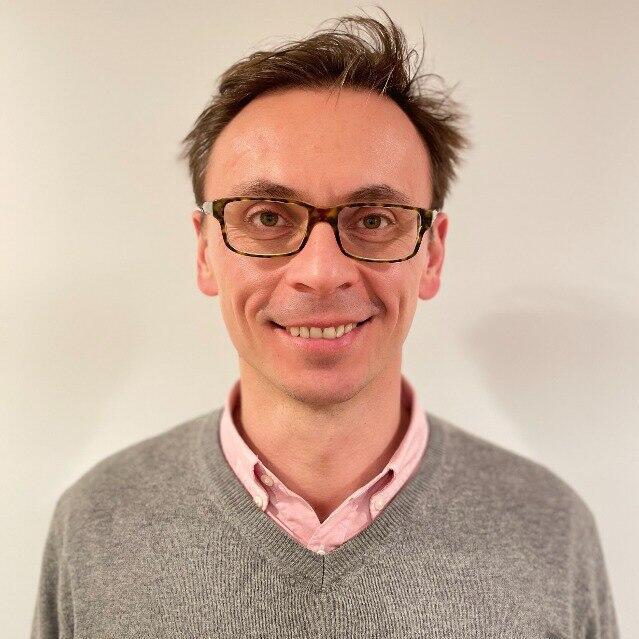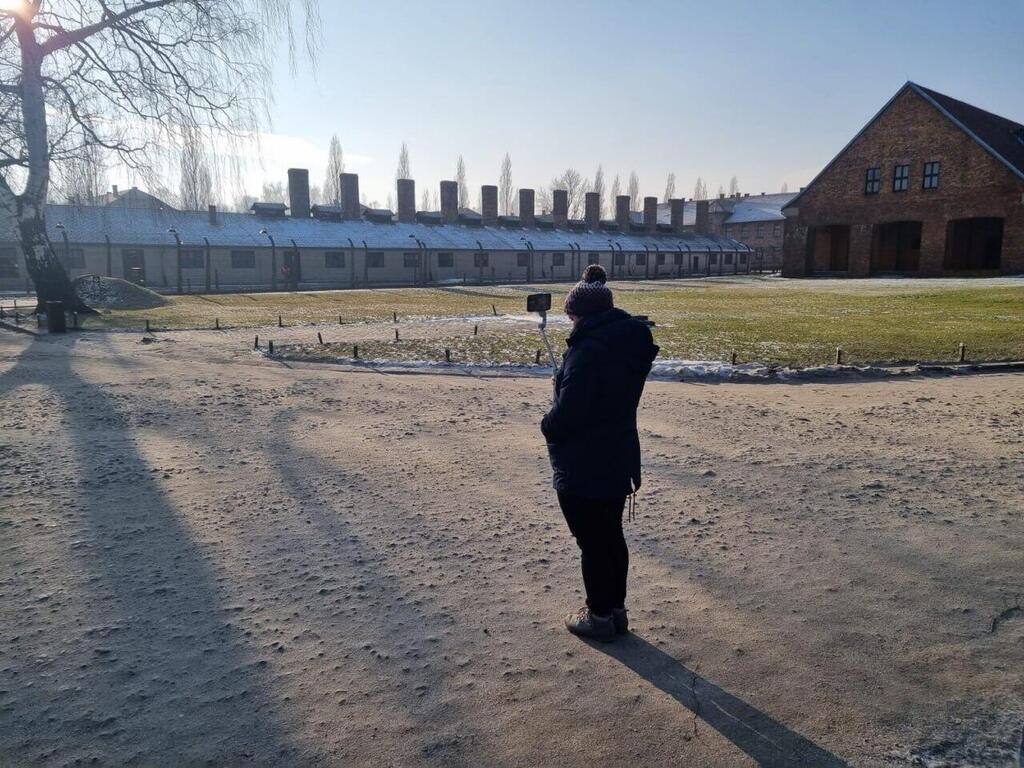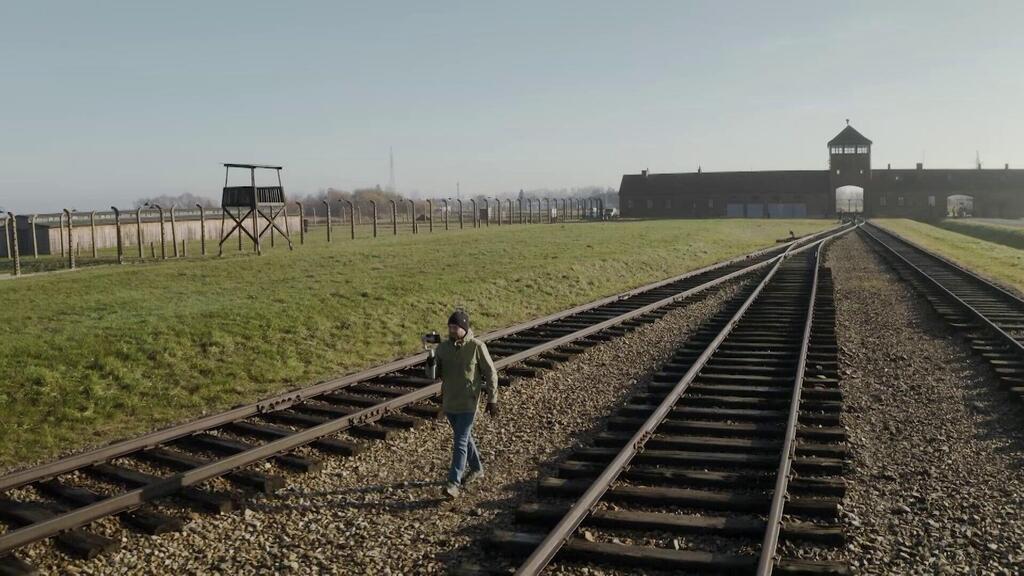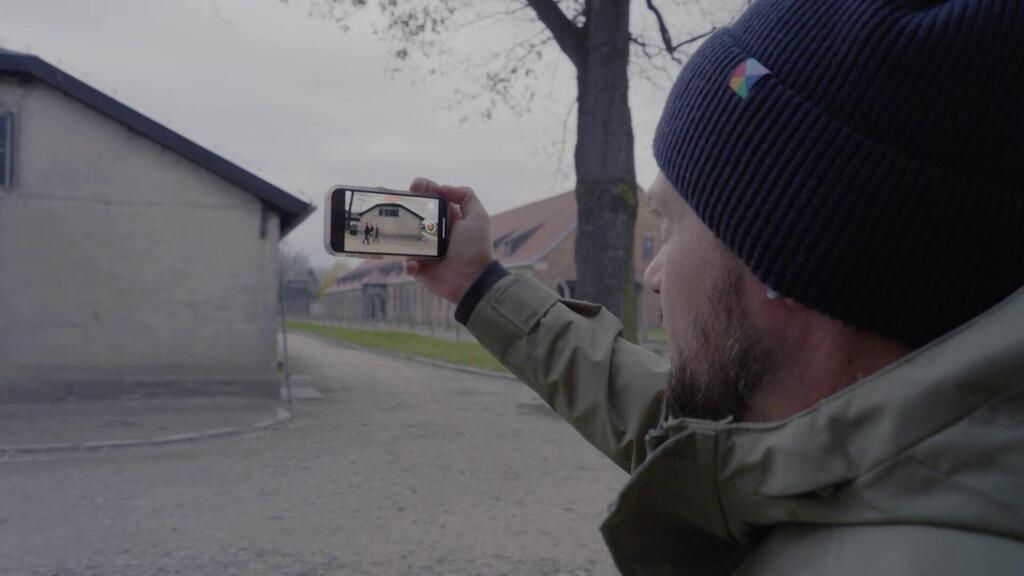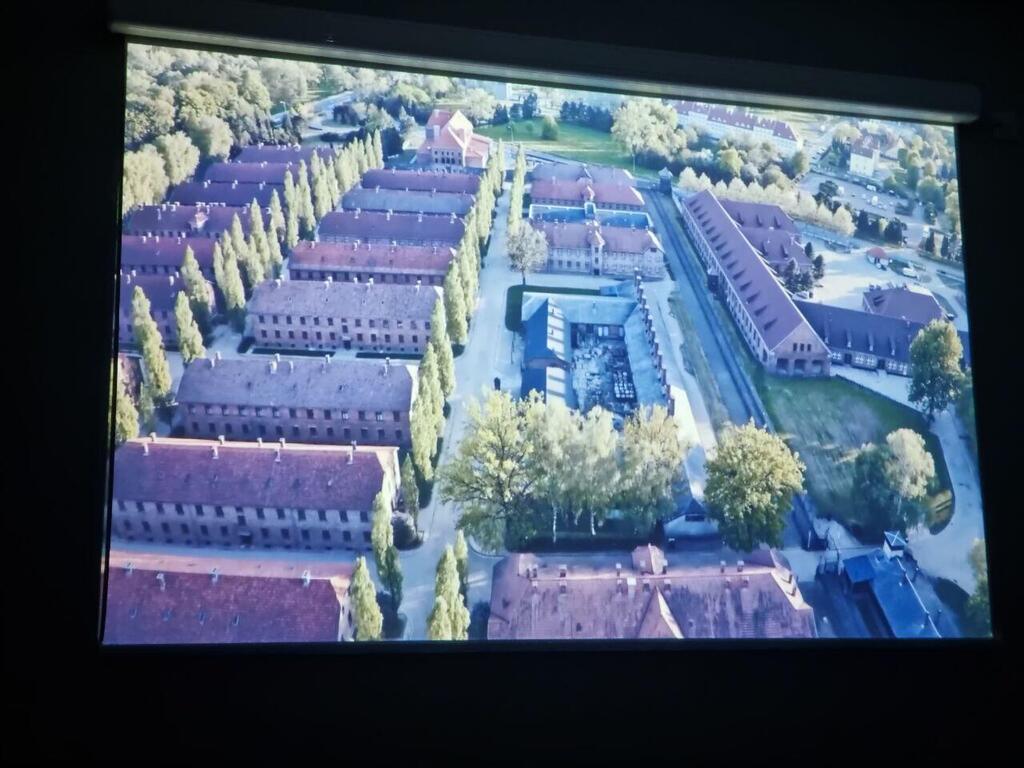Wojciech Soczewica, Director General - Auschwitz-Birkenau Foundation
"Thanks to this project, we’ll be able to bring Auschwitz-Birkenau to every classroom in the world. It is a real revolution," says Auschwitz-Birkenau Foundation CEO Wojciech Soczewica.
More stories:
“People will no longer have to come here. We can bring the tragedy and lessons of the place in the most authentic way to anywhere in the world. We need to be present on all online platforms because there are people there spreading hatred, antisemitism, and racism. This tour is the best counter to that because it’s based on facts."
8 View gallery
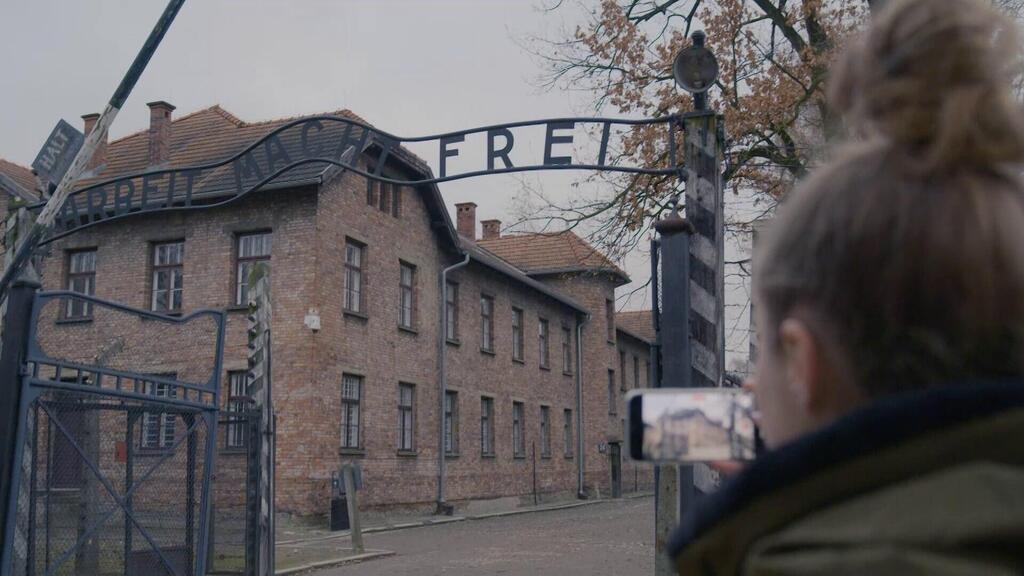

A visit to the former Auschwitz Nazi camp does not have to be in person
( Photo: Yonatan Levy/AppsFlyer)
The new virtualization project that launched last weekend will allow an online virtual tour of the Auschwitz-Birkenau concentration camp with a guided tour leading viewers along the railway tracks, gas chambers and crematorium.
Behind the project stands Israeli tech company, AppsFlyer, which developed a digital campaign analysis platform in collaboration with another Israeli company, DISKIN, specializing in user-experience design and content creation.
The project was launched following the outbreak of the COVID-19 pandemic, which led to the closure of the camp for the first time since its opening in 1947, a year and a half after its liberation.
Due to being closed for ten months over several waves, the camp faced financial difficulties, and 350 certified guides were in danger of losing their jobs. This threat also jeopardized the camp's operations: The camp's management understood that after the pandemic was over it would be challenging to convince the guides to return to work.
"I read a news article about Auschwitz closing down due to COVID-19, and told myself that we cannot stand idle; we must do something," Liron Or, head of AppsFlyer’s Corporate Social Responsibility department, and the third-generation of a Holocaust survivor.
Or reached out to Soczewica and asked how she could help. In response, he took Or, who was sitting at home in Israel, on a virtual tour of the deserted camp using his mobile phone. "It was chilling to see the place empty," she adds, "and that's where the idea was born."
This is the first time that technological means are being integrated for educational purposes at the Auschwitz site; It’s an extremely complex and sensitive matter to tackle.
The work on the project lasted two years and involved the collaboration of education, guiding and archive teams from Auschwitz, as well as Holocaust and technology experts in Israel and around the world.
The future of Holocaust education
The virtual tour lasts for one hour and 45 minutes, with a 15-minute break between the first part in Auschwitz and the second part in Birkenau. The camp can be explored in seven languages: Hebrew, English, Polish, Spanish, German, Italian, and French.
Additional languages, such as Chinese, will be added in the future. Twenty of the guides on-site have already received training on how to best guide in front of a camera, while another 60 are in various stages of learning.
Compared to the physical tour of Auschwitz, which lasts three and a half hours, the virtual tour’s overall runtime amounts to about half. After doing research, the creators found that this is optimal amount of time to hold the viewer’s attention while also providing an educational experience.
"The idea was to make the place accessible so that it would not be closed off to the world. The tour provides a personal experience, and viewers can ask the guide questions, for example."
The tour includes dozens of images and illustrations, as well as testimonies from six Jewish survivors and one Polish survivor. Additionally, a drone provides an aerial view of the camp for viewers to see.
"We had to fact-check every detail to address Holocaust denial," explains Aya Feldman, DISKIN’s creative director, who curated the experience with Ran Diskin, VP of Technology and Business Development at the company, leading the technological and logistical development of the project.
"The idea was to make the place accessible so that it would not be closed off to the world. The tour provides a personal experience, and viewers can ask the guide questions, for example," Feldman adds.
Alongside a team of Holocaust researchers and production, sound and editing professionals, Feldman wrote and directed a tour unlike anything ever seen before. The technology chosen by Diskin to implement in the tour is based on the "Zoom SDK" developed for iPhone 13 and above.
This way, the content takes into account on-site conditions, such as extreme weather. To provide a stable internet connection, Israeli communications company Partner networked the entire camp. In the past two years, the Israeli team visited Auschwitz seven times to ensure that the project would work as intended.
A new guide for a new tour
At first, the camp’s guides showed concern about participating in the project. Some feared that after the tour was filmed, they might no longer be needed in the future. Additionally, Holocaust education is a sensitive matter, and an error in the tour could be exploited by Holocaust deniers.
"It was completely new, and the initial reaction was to be expected," says Soczewica. "But the truth is the guides have no reason to worry. This tour was initially conceived to provide people entrance to the site and to secure their employment. I think it's a true revolution, and the future of Holocaust education."
"It's a huge thing to bring Auschwitz to Africa or to countries in the Middle East, after the Abraham Accords. Auschwitz becomes accessible to new audiences."
This tour represents a revolution in other aspects as well: it brings Auschwitz to audiences who never thought they’d be able to physically visit the camp. Now, for example, students in Africa, Asia and South America can get to know the camp and the horrors experienced by the Jews.
According to Soczewica, the U.S. government has shown interest in incorporating the online tour into school curricula across the nation. The mayor of Leeds in the UK requested the integration of the platform into 40 public educational institutions under his responsibility.
"Bringing students here is complex and expensive," explains Soczewica. "Imagine a virtual tour that you integrate with classroom lessons and discussions among students – it's perfect. It's a huge thing to bring Auschwitz to Africa or to countries in the Middle East, after the Abraham Accords. Auschwitz becomes accessible to new audiences. It's the globalization of memory."
Digital tour will lead to more physical tours
The museum is convinced that the virtual tour will lead to an increase in physical visitors to the camp. "We know it’ll bring more people here," Or says. "Over 87% of the people who have already seen this tour said they want to come here physically."
Tomasz Michaldo, Auschwitz’s chief guide, was actively involved in creating the virtual tour. "When I first heard about it, I thought it wouldn't work," he says in Hebrew. "After all, these are two worlds that can’t be connected.”
“It took half a year to understand how we could even make it work,” he adds. “In the end, they listened to us. They understood how the museum works and adapted their technology to our needs. The truth is that, after a virtual tour, I feel completely different. Online, you’re more than just a guide because you are also the viewer's eyes. It’s up to you what to show them.”
Recently, Michaldo held an online tour for a 94-year-old woman from the Netherlands who couldn't physically visit the camp due to her age. "We had a virtual tour for her, and she was very excited and grateful," he says.
"We incorporate a lot of art into the tour, such as paintings by survivors, to show how they themselves saw it. It was quite challenging to gain permission to use those paintings, but Holocaust museums around the world eventually granted it to us, including Yad Vashem. We’re grateful for that."
"We live in a digital world with Holocaust denial, hatred, racism, and antisemitism on the rise—and the internet plays a significant role in that.”
The project was launched at a conference of Holocaust educators held at the Auschwitz Museum. Directors from Holocaust museums around the world participated, including ones from Australia.
Oren Kaniel, the CEO of AppsFlyer and a third-generation Holocaust survivor, also attended the event. "How can we ensure that the world won’t forget?" he said. "We live in a digital world with Holocaust denial, hatred, racism, and antisemitism on the rise – and the internet plays a significant role in that.”
“Is humanity on the verge of forgetting the lessons of the Holocaust?” he asked. “Will we allow people on the internet to spread lies, or will we harness technology to promote education, facts, love, and understanding?"
According to Kaniel: "This platform gives hope that the world will learn from Auschwitz and do everything to prevent the Holocaust from happening again. The number of living Holocaust survivors is decreasing. We’re losing the opportunity to hear their testimonies.”
8 View gallery
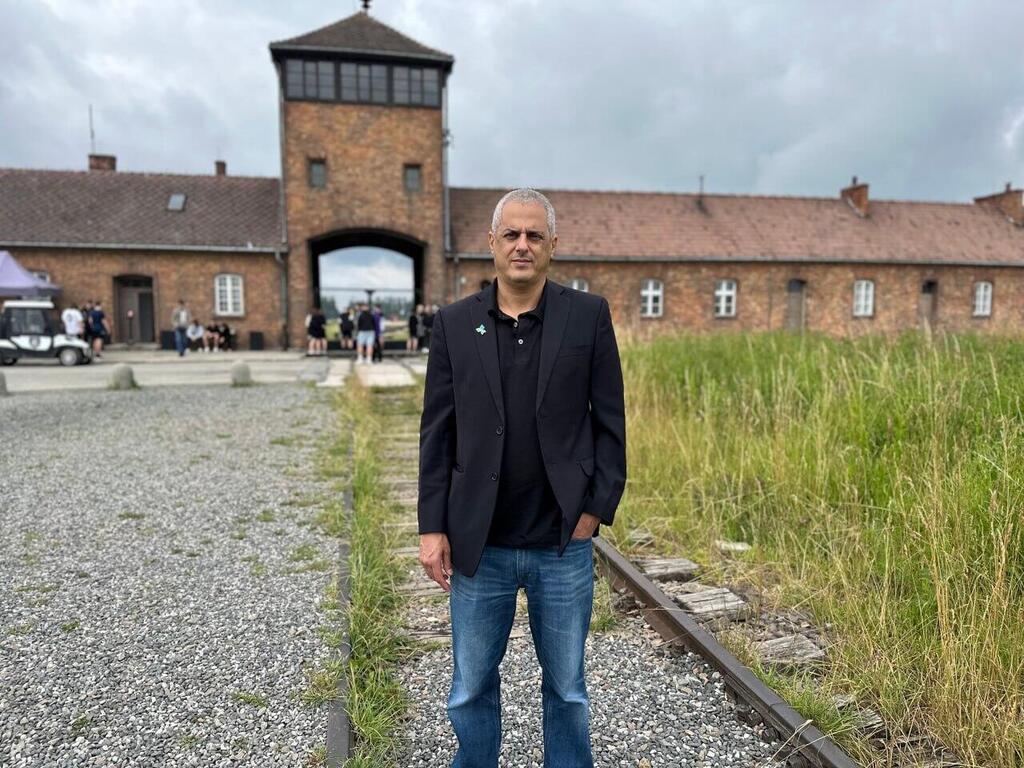

Oren Kaniel hope that the world will learn from Auschwitz and do everything to prevent the Holocaust from happening again
(Photo: Itamar Eichner)
“In a few years, there will be no more living survivors, and we will be left alone in the world with a mission: to carry the torch of memory,” he added. “When you listen to testimonies, you become a witness yourself.”
“We have a commitment to future generations. This is a very emotional day for me. We’re celebrating a victory over darkness, a victory of knowledge over ignorance," he said.
Diskin said:"The challenge before us was to provide remote access to the site while preserving its personal and authentic guidance in tours, utilizing technological advantages to enhance the experience, and add additional layers of content.”
Piotr Cywiński, the Auschwitz-Birkenau Museum’s director, said "We’re thinking about the people who didn't come here before the pandemic and won't come afterward. You can't expect students in Rio or Sudan to fly to Auschwitz.”
“Even people from Europe who don't have enough money can't come here. Think about people suffering from disabilities. About 99.9% of people on Earth cannot come here—and we created this project for them.
“It will change our message’s presence in the world," he added. "We still cannot fully estimate how impactful it’ll be. Many questions are still open. For example, I updated ambassadors in New Zealand, Japan and Australia that when their children are at school, we won’t be operating the museum.”
8 View gallery
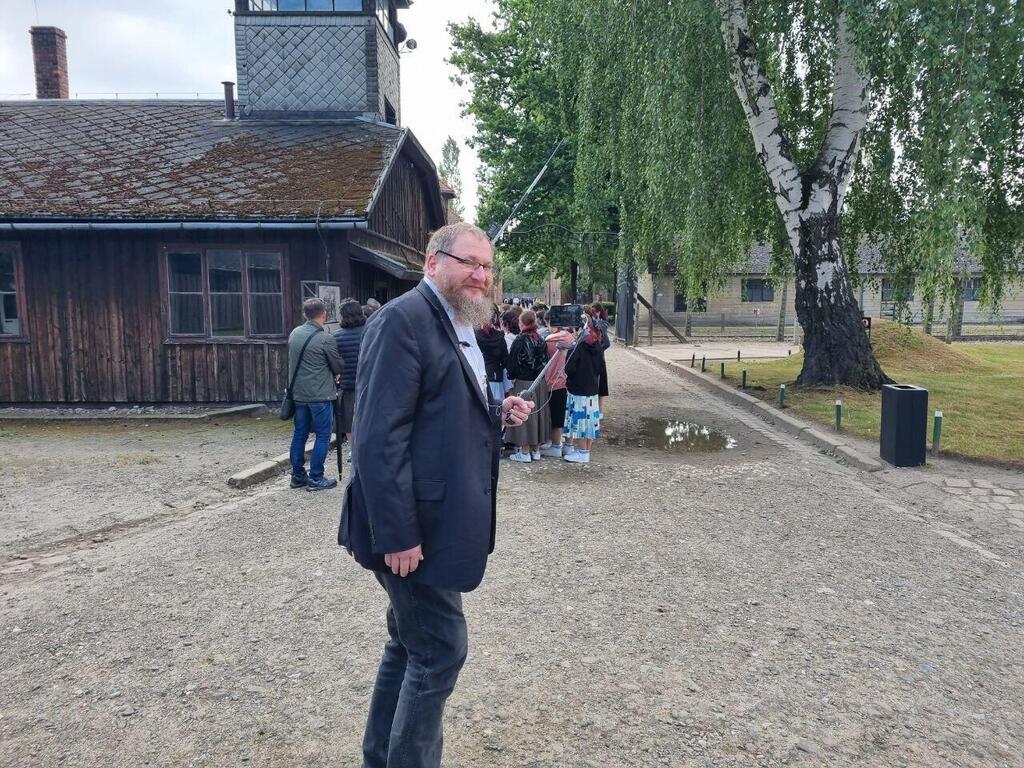

Piotr Cywiński says the project was developed for those who can not visit the site in person
(Photo: Itamar Eichner)
“We’ll need to find a solution, perhaps in night tours,” he said. “We are required to respond quickly to what’s happening around the world, which is becoming more complex. We need to address those who can’t come here. It’s our duty not to remain indifferent but to try to reach larger audiences."
Watching one of the virtual tours was Holocaust survivor Hanna Gofrit, who was saved from the horrors when she was seven, and who was deeply moved by it.
"Now, after seeing the project, I can rest in peace,” she said. “The tour truly connects all the points that make up Auschwitz. Something very authentic is conveyed here. We live in a different era.”
“Teenagers no longer talk with one another; they send WhatsApp messages. If we want to preserve the Holocaust’s memory, this is the way to do it. In my opinion, this is a historic moment,” she added.
“I wish that as many people as possible see the virtual tour, watch and understand, and take a moment to think: an unimaginable and terrible thing happened; it must never happen again."




